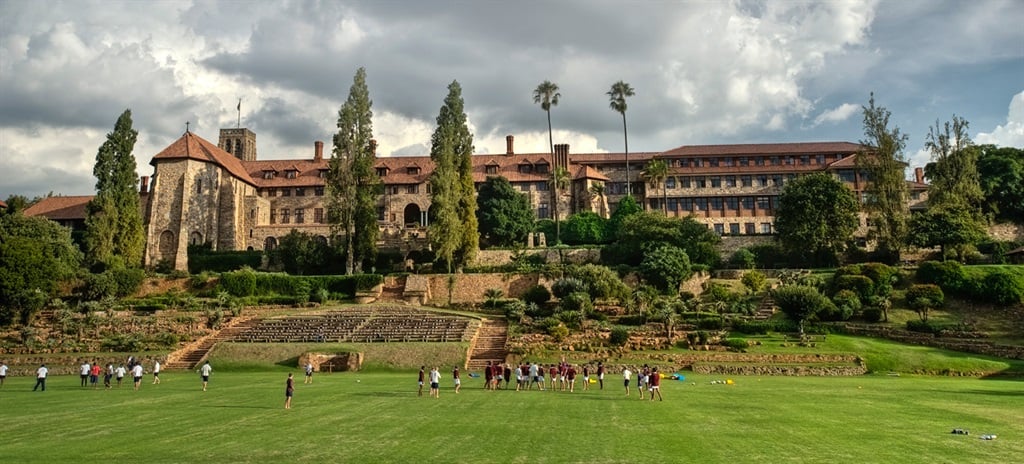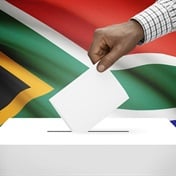
Black pupils, myself included, began trickling into St John’s College at the height of apartheid in 1978/79.
Alfred, whose surname I forget, the son of a Venda diplomat, was considered an honorary white because of his father’s diplomatic status.
And then there was Faizel Akoodi, a Muslim Indian who has remained my lifelong friend.
We most probably fought the school’s first race wars in the late 1970s, though initially they were mainly with the government of the day.
The right to attend the school was the first battle.
Other battles were daily ones for the right to a dignified existence with fellow pupils.
I returned to South Africa after having done my O-levels in England, and as St John’s offered the Cambridge GCSE A-levels, it was an obvious choice.
But my mother Jemima, the Anglican Church Council (which to this day is the highest authority of the school), and headmaster Jan J. Breitenbach had to fight tooth and nail for the then minister of education to give me the necessary permissions to attend this all-white school.
We waded through the minefield of apartheid-era legislation to put our case to the minister that not only was I worthy to enter such a prestigious school, but that indeed the standards of the school would not drop as a result of my admission.
Breitenbach also had to spend an inordinate amount of time persuading the parents’ association that the time was ripe for St John’s to admit children of colour.
With the admissions battle finally won, I was lucky enough to get an Anglican Church bursary as the school fees were completely beyond the reach of what my family could afford.
Like me, Faizel Akoodi, who had also just come back from England, was in deep shock; firstly, at being back in apartheid South Africa and secondly at the fact that our St John’s experience was so utterly different to what we came from in the UK.
I remember joking that the only thing we had in common with our immediate surroundings was the fact that we spoke English.
Because race seemed to be a daily feature in all that we did, we were tightly drawn to one another despite the fact that Faizel was a Muslim and I a Christian. We were the best of friends in that very strange environment!
At least we had a champion in Breitenbach, the bespectacled, balding headmaster, who was always immaculately dressed in a tie and suit and academic gown. He was the school’s first South African headmaster.
All previous principals had come from England. The school is run on the British public school system, emulating schools such as Eton, Harrow, Winchester and Rugby – in essence “Little England on the Highveld”.
When I arrived at St Johns I found that not only did we have to deal with the institutional racism outside the school, but that we would have to work even harder to prove to fellow learners that we were as human as them.
One of my most painful and memorable experiences was my first evening meal in Darragh Hall, the school dining room.
When I sat down with my tray of food all the boys at that table got up in disgust and left me to eat alone.
They were overtly hostile, making it abundantly clear that in their view I had no right to be there.
Faizel and I joined David Matthews’ Sixth Form and I became a boarder in Nash House. This was another culture shock.
I suffered greatly at the hands of my fellow boarders, most of whom couldn’t contemplate the prospect of sharing showers, toilets and a bedroom with me.
Many boys – and their parents – were concerned that the arrival of non-white students would lower standards at the school, and that perhaps the school would eventually be flooded by “all these blacks”.
But Alfred and the Chinese boys were regarded as honorary whites within prescribed limits and were accorded certain privileges by the Pretoria regime.
At least Breitenbach, with the support of the Anglican Church Council, completely rejected any form of racism and was ready to act decisively against any one who confronted us.
He was a man of compassion whose door was always open to me and my family.
I also had a wonderful house master, Clifford Midgley, who made every effort to make me feel right at home.
But racism existed in subtle and not-so-subtle ways. I found it really difficult to reconcile this with the school’s Christian ethos.
Even Breitenbach didn’t escape the boys’ prejudice. They would always talk about the fact that he was an Afrikaner. He was derisively called “that Dutchman”.
Venturing outside the school, particularly on weekends, was a horrendous experience for a young black boy. I was unable to travel on public transport with my classmates.
Catching buses was a no-no, whether they were for blacks or whites. Abuse would be hurled at me. Whites would insult me for wearing what was obviously a ‘white’ school uniform and the blacks would stare at me with disdain as if I had sold out.
Outside of school, “Swart Gevaar” (black menace) was a term used to describe the perceived threat against whites by the black African majority. My classmates would turn to me and ask:
“Why do you ungrateful blacks behave so after what we’ve done for you?”
Boys were leaving after matric to go and fight ‘terrorists’ in South West Africa (Namibia) – freedom fighters who looked like me!
Years later, I was told a story of how one of my peers had joined the Security Branch Police at the time.
He had decided to follow a career in the security services under the tutelage of former apartheid “super-spy”, police informant, assassin and Old Johannian Craig Williamson.
He had arrested and detained one of our disabled teachers for his involvement with proscribed political movements.
By the time I left St John’s to go to university at the Sorbonne in Paris, a few more black boys had entered St John’s on Shell bursaries.
Like me, many of them experienced racism and disdain at the hands of fellow pupils. Regrettably, the history of black boys at St John’s has never been recorded.
There is no mention of us in “Forward in Faith”, a history of the school written by Ian Grant McKenzie, director of Sixth Form Studies, who was an unreconstructed Rhodesian colonialist.
It was obvious to me that racism was a thorny issue which would take some time to solve. But I never realised that today, in 2017, it would still be an unresolved matter.
I returned to South Africa in the early 1990s with my Australian wife to cover the momentous events which were then unfolding. We had a boy, James, who started at St John’s as a pre-Prep.
I vividly remember when James was in Remove (Grade 8), then headmaster Walter Macfarlane gave a speech in which he warned that St John’s could not afford to be an ivory tower amidst the surrounding sea of poverty and crime in Yeoville and Hillbrow.
When I heard Paul Edey on radio last week, my stomach churned as he squirmed around the very poignant questions posed by 702’s Bongani Bingwa.
Edey, incidentally, had taught at the school when I was a learner.
But his demeanour on radio was very different to what I remembered. The man who once oozed confidence struggled to coherently defend eloquently his geography teacher who had been found guilty on charges of racism.
His performance was a monumental PR disaster.
As a member of the St John’s community, I was disappointed and shocked to hear the headmaster of this illustrious school destroying the foundations and legacy of the hard work of previous headmasters who had tried, and largely succeeded, to reach out to us as black members of the SJC community.
I wondered what other black parents, pupils and old boys were making of all this.
Was what we went through in the 1970s not enough? Should our children go through yet another version of racism in 2017?
What makes it even more painful is that we are continually led to believe that our racist past is behind us. Is it really?
I heard Jon Patricios, chairman of the St John’s Council, saying on radio that the school’s approach is one of restorative justice.
Simply put, it is about addressing the hurts and needs of both victims and perpetrators in such a way that both parties, as well as the communities that they are part of, are healed.
I couldn’t help but wonder just how far back the school would be prepared to go to address the imbalances and restore past broken relationships.
In order to understand where we are today, I think it’s essential to have an understanding of where we come from in order to restore confidence and trust within the school community, past and present.
But will the school listen?
- Oesi, a St John’s alumni, is a filmmaker




 Publications
Publications
 Partners
Partners








